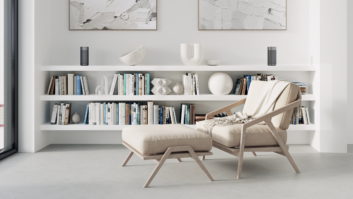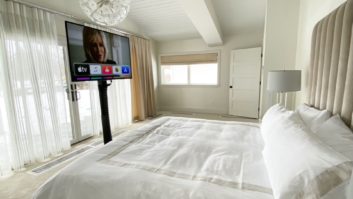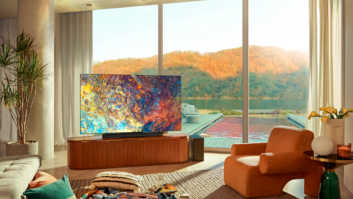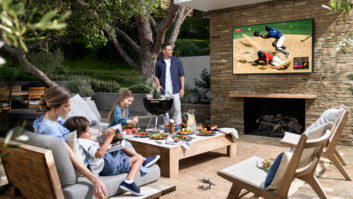If you were to vote on a piece of home theater equipment that has evolved more than any other, the AV controller would have to be on the ballot. Not only has its functions increased over the years, but its physical chassis has grown as wellfrom a couple of inches to nearly a foot tall. With all the advancements in modern AV controllers, it can be challenging to stay abreast of the latest features. Here are just a few of the things youre likely to encounter.
Trust, but Verify
This Russian saying is perhaps the most telling comment I could make about automatic audio setup systems. Yes, they are the hottest new feature to hit controllers in years, but do you trust them enough to turn them loose on your best clients high-end project?
To call them automatic calibration systems is not really accurate, because true calibration involves many more steps than even the most advanced automatic system provides. However, automatic setup can reduce some of the legwork involved in the more menial aspects of calibration. For example, the better systems are pretty good at detecting speaker distances and levels. They are far less reliable for setting crossovers and equalization, which can prove challenging even for experienced humans with advanced test gear.
Regardless of how good an automatic system is you should always check its results manually. You know the drill: a measuring tape for speaker distances, a calibrated SPL meter for levels, an analyzer of some description for crossovers and especially equalization, and test discs to generate the necessary signals.
For some things, such as speaker distances, automatic setup may, in fact, turn out to be more accurate than your manual efforts. Controllers with automatic setup often have very fine delay resolution (some as fine as 0.1 feet), which is outstanding.
Levels are a slightly different story. For starters, the controllers gain structure needs to comply with the film industrys reference scale. Channel level test noise (on disc or internal) at -30dBFS should be output at a voltage that produces 75dB SPL from the speakers at the listening position. If the automatic system doesnt start from this premise, it can end up balancing all the channels so that they match each other, but the overall level is still too high or low. For this reason, the volume control should have a reference level clearly marked, with at least 12dB of gain above reference (for particularly soft recordings), and at least 12dB of boost and cut for each channel. Otherwise, it may be impossible to calibrate the controller to reference leveleven manually.
This brings us to crossovers and equalization. Even older controllers will probably have more choices for filter type, frequency, and slope than you could ever possibly use. Unfortunately, in their zeal to be flexible, manufacturers occasionally forget to include the most commonly needed filters, such as the ubiquitous 80 Hz Linkwitz-Riley second-order high pass and fourth order low pass. The ideal solution is to measure frequency response in the crossover region with an analyzer and select the filter that produces the smoothest response. In the absence of a standalone analyzer, you can elect to trust what automatic setup tells youat your own risk.
I cannot stress enough that, regardless of automatic setup, a controller must provide all the controls you need to manually tweak the sound system. If those controls arent present to begin with, it doesnt matter if they can be set automatically or not.
The Network Neighborhood
Next to automatic setup, the thing that most distinguishes todays controllers from those of yesteryear is networking. Like many other AV components, a Web-enabled controller wont be truly happy unless it can share media files with other devices and stream media from the Internet. The most advanced controllers go even further, enabling you to save and re-load configuration data, direct-download firmware updates and new features, and even access the controller remotely (e.g., from your shop) to diagnose and repair some configuration issues.
If youre lucky, Web-enabled controllers will play nicely with your network, but that doesnt always happen. Chase Walton, my resident technology advocate, recently told me about troubleshooting a particularly perplexing network issue with his Denon AVR-4308CI. Everything worked fine except for downloading firmware updates. Last I heard, he was going to try a different ISP, because Denon indicated there might be a conflict with his AT&T DSL service.
Networking issues like this can occur with any Web-enabled controller, and its not always clear who, if anyone, is at fault. The takeaway here is to be aware that controllers will probably want to jump on a network, and it may take some doing to make them work.
Switch Off
AV controllers also have to switch digital audio and video from HDMI. This can be quite a daunting task when you consider how many different audio and video formats are supported.
On the audio side, the main difference between controllers now and five years ago is that the new models support lossless multi-channel audio. This can come in two forms: compressed bitstream (Dolby TrueHD and DTS-HD) and PCM. Remember that the controller must be HDMI 1.3 compatible to support Dolby TrueHD and DTS-HD Master Audio decoding, but dont fret if your favorite controller only supports PCM (i.e., it is HDMI 1.1 or 1.2). All three formats are lossless, which means there is theoretically no sonic difference between them if they were minted from the same master.
However, you will need to make sure that the source component sending the PCM stream to the controller will decode lossless tracks. If it only decodes lossy (e.g., Dolby Digital or DTS), then the decoded PCM stream will be lossy even though PCM itself is lossless.
Switching over to video, youre likely to find that modern controllers have a whole host of new video processing features. The first and most important feature to look for is actually OFF. Yes, that means everything related to video processing is OFFthe bits that go in are the bits that come out. Controllers are notorious for taking pristine digital HD pictures and totally screwing them up. Im not saying all controllers do it, but its nice to have a bypass mode in case a controller goes all Hannibal Lecter on the picture.
Here are some places where youre likely to run into trouble:
- Analog-to-HDMI conversion. Video A/D is not easy to do well, and youre likely to have some major issues with the way a controller does it. I recommend using analog-to-HDMI conversion only for sources where quality does not matter (e.g., an NTSC security camera).
- Color space conversion. There can be a lot of switching from YCbCr (digital component video) to RGB and back that goes on between the source and the display. Theres probably some component color sample conversion happening as well (e.g., YCbCr 4:2:0 to YCbCr 4:2:2). A lot of math is involved in these conversions, and the resulting picture can be quite wrong if all the numbers dont add up.
- De-interlacing and scaling. If this werent a problem area, we wouldnt have major players like Faroudja, Silicon Optix, Gennum, and Anchor Bay making both standalone and integrated products. These companies have invested lots of money in educating people about good vs. bad de-interlacing and scaling, so let me refer you to them for a dossier on what your AV controller should be doing.
You Take It from Here
To be honest, these are just a few of the many new features youll find on controllers. Other things include satellite radio tuners, iPod docks, and multi-zone capabilities. Controllers are such an integral part of home theaters that youd be well served to spend a little extra time researching all the available bells and whistles. Theres sure to be one that is right for each of your projects. It may just take a little extra effort to find it.
Chase Walton contributed to this article.







